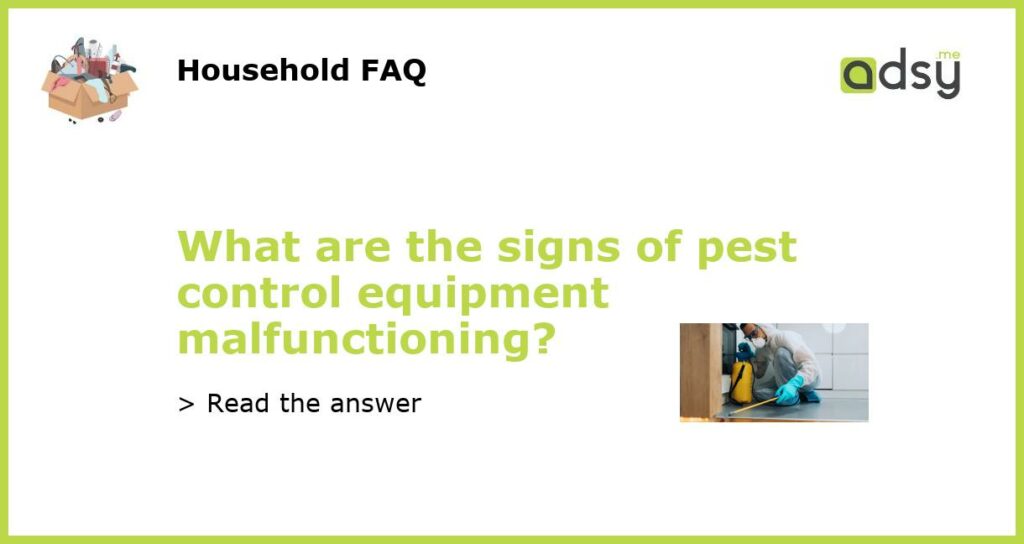Signs of Pest Control Equipment Malfunctioning
When it comes to pest control, having well-functioning equipment is crucial. Whether you are a professional pest control operator or a homeowner trying to tackle a pest issue, malfunctioning equipment can greatly hinder your ability to effectively control pests. In this article, we will discuss some of the signs that indicate your pest control equipment is malfunctioning, and what steps you can take to address the issue.
Inconsistent Pest Control Results
One of the first signs that your pest control equipment may be malfunctioning is inconsistent results. If you are using the same products and techniques but are not seeing the expected results, it could be an indication that your equipment is not working properly. For example, a malfunctioning sprayer may not be delivering the correct amount of pesticide, leading to inadequate control of pests. In such cases, it is important to thoroughly inspect and test your equipment to identify and address any malfunctions.
Leaks or Clogs
Another sign of equipment malfunctioning is the presence of leaks or clogs. If you notice fluid dripping or spraying from your equipment when it shouldn’t be, it is a clear indication that there is a problem. Similarly, if you experience clogging, where the flow of pesticide is obstructed, it can impact the effectiveness of your pest control efforts. Regularly inspecting and cleaning your equipment can help prevent leaks and clogs, ensuring that it functions properly.
Reduced Pressure or Flow
Reduced pressure or flow is another common sign of equipment malfunctioning. If you notice a decrease in the pressure or flow of pesticide when using your sprayer or fogger, it could indicate a problem with the pump or nozzle. An inadequate pressure or flow can result in uneven distribution of pesticide, leading to ineffective pest control. Checking your equipment’s pressure and flow regularly can help identify and fix any issues before they impact your pest control efforts.
Difficulty Starting or Operating Equipment
If you are experiencing difficulty starting or operating your pest control equipment, it could be a sign of malfunction. Equipment that is hard to start or operate may have issues with the engine, fuel system, or other components. Ignoring these issues can lead to further damage and even render the equipment unusable. Regular maintenance and servicing of your equipment can help prevent startup and operational issues, ensuring its proper functioning.
Excessive Wear and Tear
Finally, excessive wear and tear on your pest control equipment can also indicate malfunctioning. Signs of wear and tear, such as cracked hoses, frayed wires, or broken parts, can compromise the performance and safety of your equipment. Regularly inspecting and replacing worn or damaged parts is essential to keep your equipment in good working condition. Additionally, following proper storage and handling practices can help prevent unnecessary damage and prolong the lifespan of your equipment.
In conclusion, it is important to be vigilant for signs of pest control equipment malfunctioning. Inconsistent pest control results, leaks or clogs, reduced pressure or flow, difficulty starting or operating equipment, and excessive wear and tear are all indicators that your equipment may not be functioning properly. Addressing these issues promptly through regular maintenance and proper servicing can help ensure that your pest control efforts are effective and efficient.

